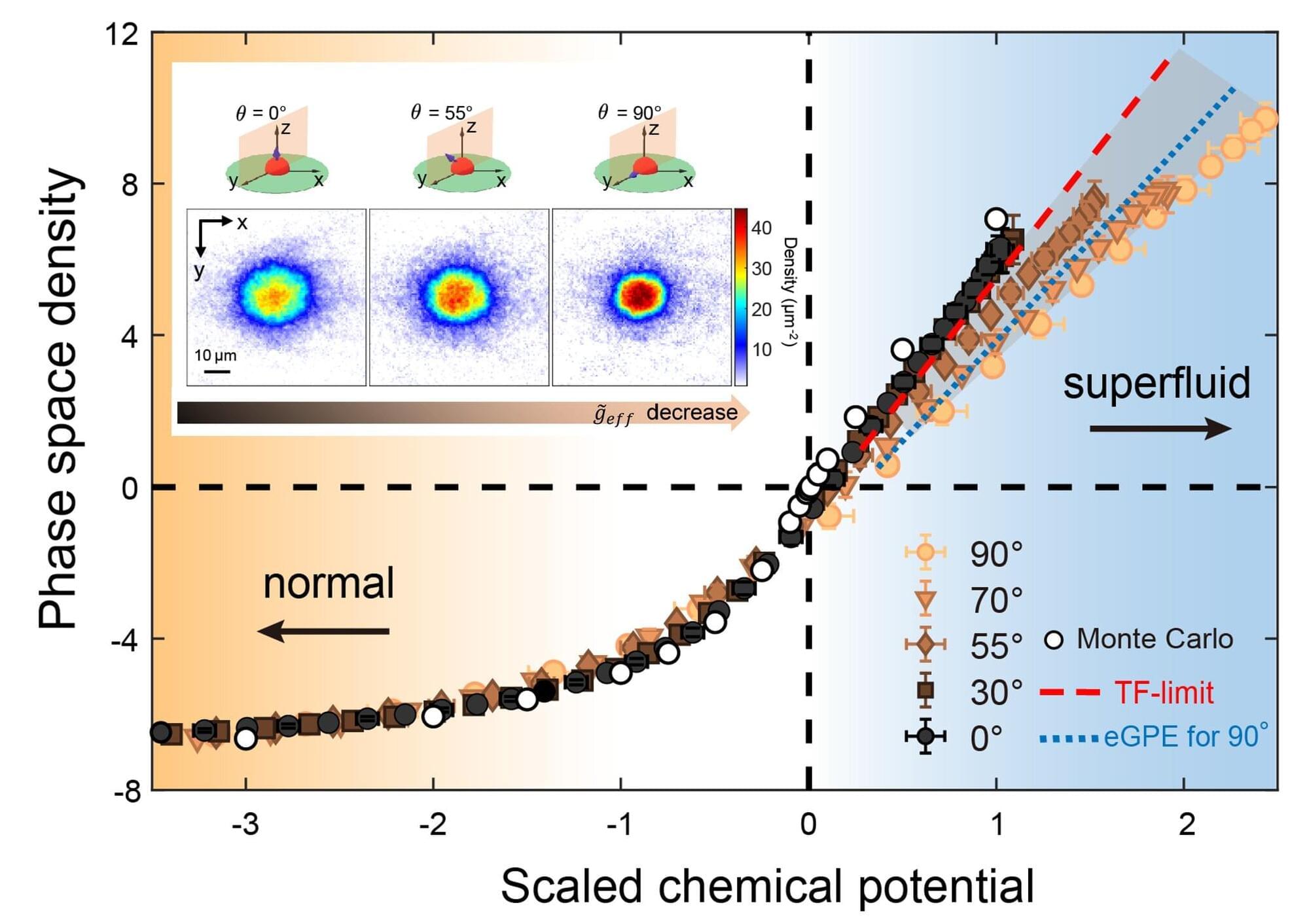In a recent study, researchers made a significant observation of the Berezinskii-Kosterlitz-Thouless (BKT) phase transition in a 2D dipolar gas of ultracold atoms. This work marks a milestone in understanding how 2D superfluids behave with long-range and anisotropic dipolar interactions. The researchers are an international team of physicists, led by Prof. Jo Gyu-Boong from the Department of Physics at the Hong Kong University of Science and Technology (HKUST).
Their findings are published in the journal Science Advances.
In conventional three-dimensional (3D) systems, phase transitions, such as ice melting into water, are governed by the spontaneous breakdown of symmetries. However, pioneering work in the 1970s predicted that two-dimensional (2D) systems could host a unique topological phase transition known as the BKT transition, where vortex-antivortex pairs drive superfluidity without conventional symmetry breaking, with interaction playing a crucial role. Since then, this phenomenon had primarily been studied in various quantum systems with only short-range isotropic contact interactions.
